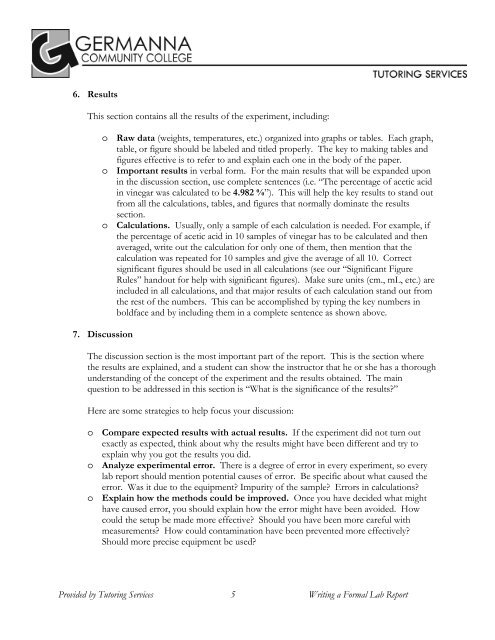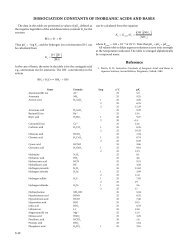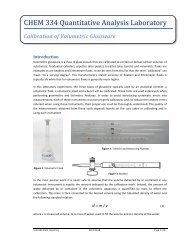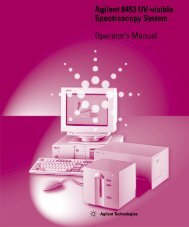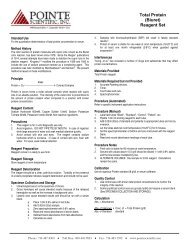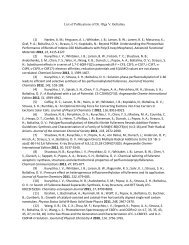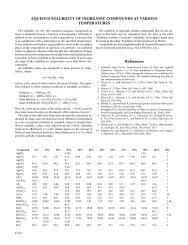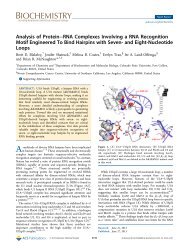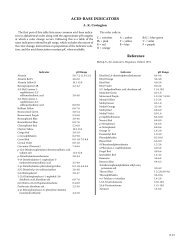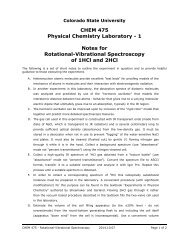Writing a Formal Lab Report
Writing a Formal Lab Report
Writing a Formal Lab Report
- No tags were found...
Create successful ePaper yourself
Turn your PDF publications into a flip-book with our unique Google optimized e-Paper software.
6. ResultsThis section contains all the results of the experiment, including:o Raw data (weights, temperatures, etc.) organized into graphs or tables. Each graph,table, or figure should be labeled and titled properly. The key to making tables andfigures effective is to refer to and explain each one in the body of the paper.o Important results in verbal form. For the main results that will be expanded uponin the discussion section, use complete sentences (i.e. “The percentage of acetic acidin vinegar was calculated to be 4.982 %”). This will help the key results to stand outfrom all the calculations, tables, and figures that normally dominate the resultssection.o Calculations. Usually, only a sample of each calculation is needed. For example, ifthe percentage of acetic acid in 10 samples of vinegar has to be calculated and thenaveraged, write out the calculation for only one of them, then mention that thecalculation was repeated for 10 samples and give the average of all 10. Correctsignificant figures should be used in all calculations (see our “Significant FigureRules” handout for help with significant figures). Make sure units (cm., mL, etc.) areincluded in all calculations, and that major results of each calculation stand out fromthe rest of the numbers. This can be accomplished by typing the key numbers inboldface and by including them in a complete sentence as shown above.7. DiscussionThe discussion section is the most important part of the report. This is the section wherethe results are explained, and a student can show the instructor that he or she has a thoroughunderstanding of the concept of the experiment and the results obtained. The mainquestion to be addressed in this section is “What is the significance of the results?”Here are some strategies to help focus your discussion:o Compare expected results with actual results. If the experiment did not turn outexactly as expected, think about why the results might have been different and try toexplain why you got the results you did.o Analyze experimental error. There is a degree of error in every experiment, so everylab report should mention potential causes of error. Be specific about what caused theerror. Was it due to the equipment? Impurity of the sample? Errors in calculations?o Explain how the methods could be improved. Once you have decided what mighthave caused error, you should explain how the error might have been avoided. Howcould the setup be made more effective? Should you have been more careful withmeasurements? How could contamination have been prevented more effectively?Should more precise equipment be used?Provided by Tutoring Services 5 <strong>Writing</strong> a <strong>Formal</strong> <strong>Lab</strong> <strong>Report</strong>


